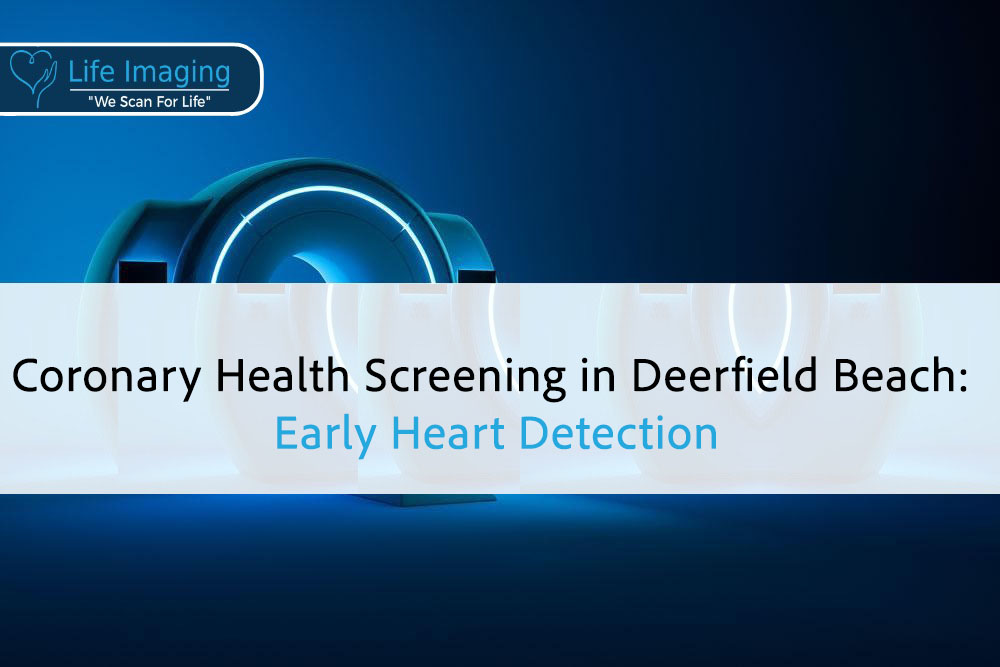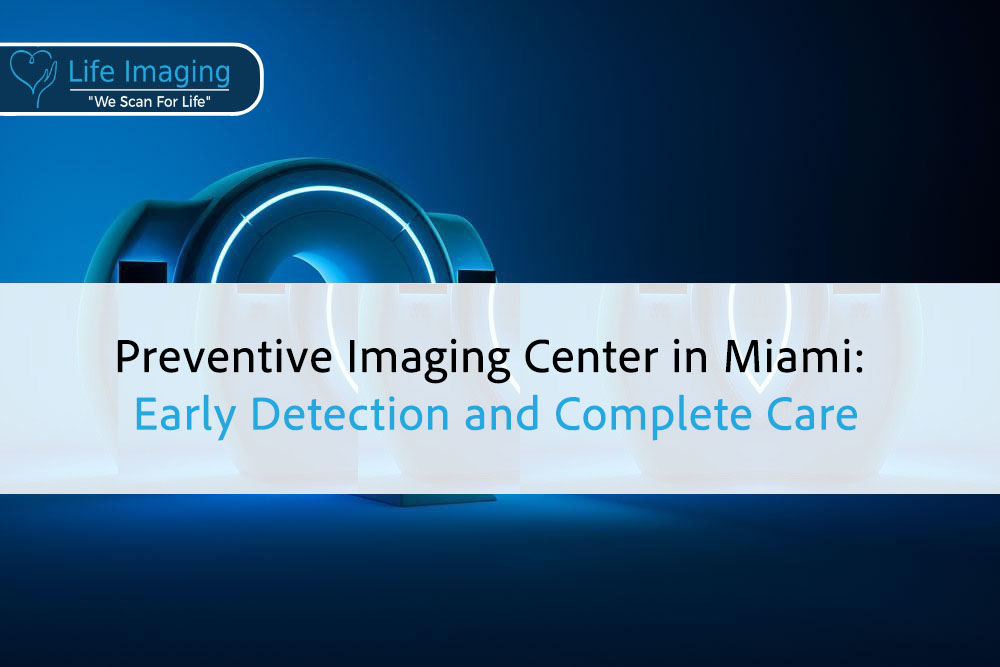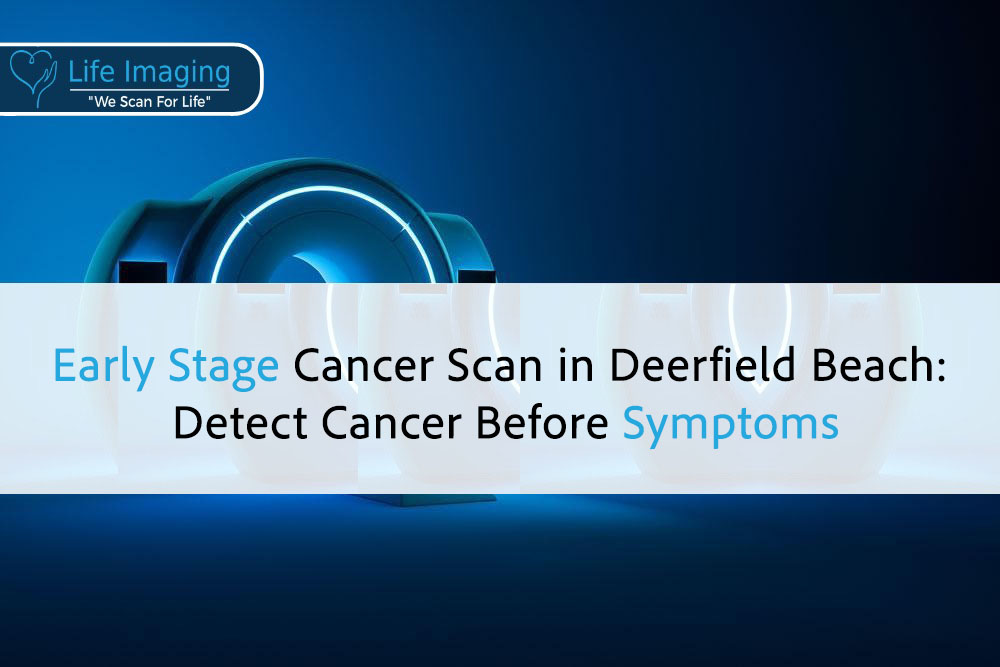
Coronary Artery Scan Near Me in Jupiter: Early Heart Health Detection
Introduction Your heart works hard every second of the day,

Hairy Cell Leukemia (HCL) is a rare form of chronic leukemia that affects a type of white blood cell called B-lymphocytes. Named for the hairy appearance of the cancer cells under the microscope, this disease can progress slowly and may initially present with subtle symptoms. Understanding and recognizing the early stages of HCL is crucial for effective treatment and better health outcomes.
Early detection plays a pivotal role in managing Hairy Cell Leukemia. Advanced imaging techniques and regular screenings are essential tools in identifying this disease at an early stage. As an imaging center focused on early detection of heart disease and cancer, Life Imaging Fla is dedicated to providing precise and timely diagnoses, helping individuals take proactive steps towards their health.
In this comprehensive guide, we will explore the early stages of Hairy Cell Leukemia, including its symptoms, risk factors, and the importance of early detection. W
e will also discuss various screening methods and how advanced imaging technologies, like those offered at Life Imaging Fla, can aid in the early identification of this condition. By empowering yourself with knowledge about HCL and utilizing cutting-edge diagnostic tools, you can enhance your chances of effective treatment and improved quality of life. Join us as we delve into the essential aspects of detecting Hairy Cell Leukemia early.
Understanding Hairy Cell Leukemia
Hairy Cell Leukemia (HCL) is a rare type of blood cancer. It affects B-lymphocytes, which are white blood cells important for fighting infections. In people with HCL, the bone marrow produces too many abnormal B-lymphocytes. These abnormal cells look “hairy” under a microscope.
The bone marrow also produces red blood cells and platelets. In HCL, the overproduction of abnormal B-lymphocytes crowds out normal blood cells. This can lead to various symptoms and health issues.
Symptoms of Hairy Cell Leukemia
Recognizing the symptoms of HCL can help with early detection. Some common symptoms include:
– Fatigue: A feeling of extreme tiredness that doesn’t go away with rest.
– Frequent Infections: Lower numbers of healthy white blood cells make it hard to fight infections.
– Easy Bruising and Bleeding: Low platelet levels can cause easy bruising, nosebleeds, or bleeding gums.
– Anemia: Low red blood cell counts can cause weakness or breathlessness.
– Fullness or Pain in the Abdomen: Enlarged spleen or liver can cause discomfort or feeling full quickly when eating.
Risk Factors for Hairy Cell Leukemia
While the exact cause of HCL is unknown, certain factors can increase the risk of developing the disease. Understanding these risk factors can help in early detection.
Age and Gender
HCL mostly affects adults, usually those over 50 years old. It is more common in men than in women. Knowing this can prompt timely screening for those at higher risk.
Exposure to Chemicals
Certain chemicals, like those used in farming or manufacturing, may increase the risk. Farmers and industrial workers should be more vigilant about their health.
Importance of Early Detection
Early detection of Hairy Cell Leukemia is crucial for better treatment outcomes. Identifying the disease in its early stages can help manage symptoms and improve the quality of life. Advanced imaging technologies and regular screenings are key to catching HCL early.
Screening Methods for Hairy Cell Leukemia
Several tests and screening methods can help detect Hairy Cell Leukemia early. Being aware of these can aid in timely diagnosis.
A complete blood count (CBC) is often the first test done when symptoms suggest HCL. This test measures the levels of red blood cells, white blood cells, and platelets in the blood. Abnormal levels can indicate the presence of HCL.
A bone marrow biopsy involves taking a small sample of bone marrow, usually from the hip bone, to examine under a microscope. This test can confirm the presence of hairy cells in the bone marrow and is essential for a definitive diagnosis.
Flow cytometry is a lab test that analyzes the physical and chemical properties of cells in a blood or bone marrow sample. This test helps identify the specific type of leukemia cells, aiding in accurate diagnosis.
Imaging tests, such as CT scans or ultrasound, can help detect an enlarged spleen or liver, which is common in HCL patients. These tests provide a detailed view of the internal organs and are useful in monitoring disease progression.
Advanced Imaging Technologies
Advanced imaging plays a significant role in the early detection of HCL. These technologies offer precise and detailed insights into the body, helping in early diagnosis and treatment planning.
A CT scan uses X-rays to create detailed cross-sectional images of the body. It can help detect abnormalities in the spleen, liver, and lymph nodes, which are often affected by HCL.
Ultrasound uses sound waves to produce images of the inside of the body. It is a non-invasive and painless way to check for an enlarged spleen or liver.
MRI scans use magnetic fields and radio waves to create detailed images. This imaging method can provide a clear view of bone marrow and other body parts affected by HCL.
Benefits of Advanced Imaging
Advanced imaging technologies offer several benefits in detecting Hairy Cell Leukemia early.
These imaging tests provide accurate and detailed images, helping in the precise identification of abnormalities caused by HCL.
Many of these imaging methods are non-invasive, meaning they do not require surgery or extensive procedures. This makes the screening process simpler and less stressful for patients.
Using advanced imaging can detect HCL before symptoms become severe. Early detection leads to early treatment, which can significantly improve outcomes.
Monitoring and Follow-Up
After an initial diagnosis, regular monitoring and follow-up are essential. This helps track the disease’s progression and the effectiveness of treatment. Routine blood tests, bone marrow exams, and imaging tests ensure the disease is managed effectively.
Regular check-ups and screenings are crucial for early detection and effective management of Hairy Cell Leukemia. Advanced imaging technologies play a vital role in identifying the disease at an early stage. By recognizing symptoms, understanding risk factors, and utilizing advanced screening methods, individuals can take proactive steps toward better health and improved treatment outcomes.
Treatment Options for Hairy Cell Leukemia
After a diagnosis of Hairy Cell Leukemia, a healthcare provider will discuss treatment options. These treatments aim to manage symptoms and improve the patient’s quality of life. Knowing the available treatments can help patients make informed decisions.
Chemotherapy uses drugs to kill cancer cells. For HCL, doctors often use purine analogs like cladribine (2-CdA) and pentostatin. These drugs are effective and may induce remission in many patients. Patients typically receive these treatments through an IV over several days. Side effects can include fatigue, nausea, and a higher risk of infection due to lower white blood cell counts.
Biological therapies help the body’s immune system fight cancer. Interferon-alpha is one such treatment used for HCL. It works by boosting the body’s immune response to eliminate cancer cells. Patients may receive this drug through injections. Side effects can include flu-like symptoms, fatigue, and depression.
Targeted Therapy
Targeted therapy uses drugs that specifically target cancer cells without affecting normal cells. Vemurafenib is one such drug for HCL patients with specific genetic mutations. This treatment can help reduce cancer cell growth and improve symptoms. Patients may take this drug orally, but it can cause skin rash, joint pain, and fatigue as side effects.
Importance of Regular Monitoring
After completing initial treatment, regular monitoring is crucial. This helps detect any recurrence of the disease and ensures timely intervention.
Patients need regular blood tests to check their blood cell counts. These tests help detect any signs of disease recurrence early. A healthcare provider will schedule these tests at regular intervals.
Doctors may perform additional bone marrow biopsies to check for hairy cells. These biopsies can confirm if the treatment is working and whether the cancer is in remission.
Imaging tests like CT scans or ultrasounds help monitor the size of the spleen and liver. Regular imaging tests ensure that any changes or abnormalities are detected early.
Lifestyle Changes to Support Treatment
Making certain lifestyle changes can help patients manage symptoms and support their overall health during and after treatment.
A balanced diet rich in fruits, vegetables, lean proteins, and whole grains can support overall health. Avoiding processed foods and added sugars can help maintain a healthy weight and boost energy levels.
Regular exercise can help improve energy levels and reduce fatigue. Simple activities like walking, yoga, or swimming can be beneficial. Always consult with a healthcare provider before starting any new exercise routine.
Managing stress is important for overall well-being. Techniques like deep breathing, meditation, and mindfulness can help reduce stress levels. Engaging in hobbies and activities that bring joy can also improve mental health.
Support Systems and Resources
Having a strong support system is important for managing Hairy Cell Leukemia. Various resources are available to help patients and their families.
Joining a support group allows patients to connect with others going through similar experiences. Sharing stories and advice can provide emotional support and practical tips.
Professional counseling can help patients cope with the emotional challenges of living with HCL. Therapists can provide strategies to manage anxiety and depression.
Educational resources like brochures, websites, and books can provide valuable information about HCL. Understanding the disease and its treatments can help patients feel more in control.
Future Directions in Hairy Cell Leukemia Research
Ongoing research is essential in improving the detection and treatment of Hairy Cell Leukemia. Scientists are continually exploring new therapies and diagnostic tools.
Researchers are studying new drugs that target specific genetic mutations in HCL cells. These drugs aim to improve treatment outcomes with fewer side effects. Clinical trials are an important part of this research.
Immunotherapy is another promising area of research. This treatment boosts the body’s immune system to fight cancer more effectively. Scientists are exploring new immunotherapy drugs specifically for HCL.
Understanding the genetic mutations that cause HCL can lead to better-targeted treatments. Researchers are studying the genetic makeup of HCL cells to identify new targets for therapy.
Role of Early Detection in Improving Treatment Outcomes
Early detection of Hairy Cell Leukemia leads to better treatment outcomes. By catching the disease early, treatments can start sooner, reducing the risk of complications.
Timely Intervention
Early detection allows for timely intervention, which can prevent the disease from progressing. Starting treatment early can improve the chances of remission and reduce the severity of symptoms.
Encouraging Routine Screenings
Encouraging routine screenings for individuals at risk of HCL can lead to early diagnosis and treatment. Awareness campaigns and educational programs can help promote the importance of regular check-ups.
Public awareness campaigns can educate people about the symptoms and risk factors of HCL. These campaigns encourage at-risk individuals to seek medical advice promptly.
Educational programs in schools, workplaces, and community centers can provide valuable information about HCL. These programs can help people understand the importance of routine screenings.
Importance of Patient Advocacy
Patient advocacy is important in the fight against Hairy Cell Leukemia. Advocates work to raise awareness, support research, and improve patient care.
Patient advocates raise awareness about HCL through social media, public speaking, and writing. They share their stories to educate others about the disease and its impact.
Patient advocates often support research efforts by participating in clinical trials and fundraising. Their contributions help advance the understanding and treatment of HCL.
Advocates work to improve patient care by pushing for better access to treatments and supportive services. They collaborate with healthcare providers, researchers, and policymakers to ensure patient needs are met.

Understanding Genetic Mutations in Hairy Cell Leukemia
Hairy Cell Leukemia often involves specific genetic mutations. Learning about these mutations can help in understanding the disease and developing targeted treatments.
The BRAF V600E mutation is a common genetic change found in most HCL cases. This mutation causes B-lymphocytes to grow uncontrollably, leading to leukemia. Knowing about this mutation helps doctors choose targeted therapies, like vemurafenib, that specifically inhibit BRAF V600E.
Researchers have found other mutations in genes like MAP2K1. These mutations also play a role in the development of HCL. Identifying these mutations helps in understanding the disease better and developing new therapies.
The Importance of Genetic Testing
Genetic testing can identify the specific mutations present in HCL cells. This information is crucial for tailoring treatment plans and improving outcomes.
Knowing the specific genetic mutations in HCL can help doctors create personalized treatment plans. This ensures that patients receive the most effective therapies for their condition.
Genetic testing can also provide information about the disease’s likely progression. This helps doctors and patients make informed decisions about treatment and monitoring.
The Role of Clinical Trials
Clinical trials are research studies that test new treatments for HCL. Participating in these trials can provide access to cutting-edge therapies and contribute to medical research.
Patients in clinical trials can access new treatments that are not yet widely available. These therapies may be more effective or have fewer side effects than existing treatments.
By participating in clinical trials, patients contribute to the advancement of medical research. Their involvement helps researchers learn more about HCL and develop better treatments for future patients.
Managing Side Effects of Treatment
Treatment for Hairy Cell Leukemia can cause side effects. Managing these side effects is important for maintaining quality of life during treatment.
Common side effects of HCL treatments include fatigue, nausea, and an increased risk of infection. Understanding these side effects can help patients prepare and manage them effectively.
Preventive measures can help reduce the severity of side effects. For example, patients can practice good hygiene to reduce infection risk and follow a balanced diet to maintain energy levels.
Supportive care, like medications to control nausea and therapies to boost immune function, can help manage side effects. Regular communication with healthcare providers ensures that side effects are addressed promptly.
Psychological Impact of Hairy Cell Leukemia
Living with Hairy Cell Leukemia can affect a person’s mental and emotional well-being. Addressing the psychological impact is an important part of comprehensive care.
A diagnosis of HCL can lead to various emotional reactions, including fear, anxiety, and depression. These feelings are normal, and it is important to find ways to cope with them.
Having a strong support system can help patients manage the emotional challenges of HCL. Friends, family, support groups, and counselors can provide emotional support and practical help.
Practicing mindfulness and relaxation techniques can help reduce stress and improve mental well-being. Activities like meditation, yoga, or deep breathing exercises can be beneficial.
Impact of Hairy Cell Leukemia on Daily Life
Hairy Cell Leukemia can affect different aspects of a person’s daily life. Making adjustments can help manage the impact and improve quality of life.
Fatigue and other symptoms may affect a person’s ability to work or attend school. It is important to communicate with employers or teachers about the condition and explore accommodations if needed.
Managing HCL symptoms and treatment side effects can impact home life. Establishing a routine, seeking help with household tasks, and making time for rest can help maintain balance.
Social activities are important for overall well-being. Finding ways to stay connected with friends and engage in enjoyable activities can help maintain a positive outlook.
Nutritional Support for Hairy Cell Leukemia Patients
Good nutrition can support overall health and help manage symptoms of Hairy Cell Leukemia. Focusing on a balanced diet can make a difference in the treatment journey.
Vital Nutrients
Certain nutrients are especially important for HCL patients. Protein helps repair tissues and maintain muscle mass, while vitamins and minerals support immune function and overall health.
Staying well-hydrated is important for everyone, especially those undergoing treatment for HCL. Drinking plenty of water helps the body function properly and can reduce treatment side effects.
Dietary adjustments, like eating small, frequent meals, can help manage symptoms like nausea. A healthcare provider or nutritionist can offer personalized dietary advice.
Exercise and Physical Activity for Hairy Cell Leukemia Patients
Physical activity can help manage symptoms and improve overall health for HCL patients. Tailoring exercise routines to individual capabilities and needs is key.
Exercise can boost energy levels, reduce fatigue, and improve mood. It also supports heart health and overall fitness, which is beneficial for HCL patients.
Gentle exercises, like walking, stretching, and yoga, can be safe and effective for HCL patients. It is important to start slowly and gradually increase activity levels.

Before starting any new exercise routine, it is important to consult with healthcare providers. They can offer personalized advice and help create a safe and effective exercise plan.
The Future of Hairy Cell Leukemia Treatment
Advancements in medical research are continually improving the detection and treatment of Hairy Cell Leukemia. Staying informed about these developments can offer hope and new options for patients.
Researchers are developing new therapies that target specific genetic mutations in HCL cells. These therapies aim to improve treatment outcomes and reduce side effects.
Innovations in immunotherapy are promising for HCL treatment. New drugs and treatments that boost the immune system’s ability to fight cancer cells are being tested in clinical trials.
Ongoing research efforts continue to explore the causes and treatment of HCL. Scientists are studying the disease at a molecular level to develop better-targeted treatments and improve patient outcomes.
By understanding the symptoms, risks, and early detection methods of Hairy Cell Leukemia, patients can take proactive steps toward effective treatment. Regular screenings, personalized treatment plans, and strong support systems play crucial roles in managing this chronic illness and improving quality of life. Staying informed about the latest advancements and research offers hope for a brighter future in HCL treatment.
Conclusion
Hairy Cell Leukemia, a rare but treatable form of blood cancer, requires vigilant monitoring and early detection for the best outcomes. From understanding symptoms and risk factors to exploring advanced treatment options, being informed can make a significant difference in managing HCL. Regular screenings, personalized treatments, genetic testing, and supportive care are vital components in effectively combating this disease.
Advancements in medical research continue to offer hope, bringing new therapies and methods for early detection into the spotlight. Technologies such as advanced imaging play a critical role in identifying the disease early, enabling timely intervention that can significantly improve patient prognosis and quality of life.
At Life Imaging Fla, we understand the importance of early detection. Our state-of-the-art imaging technologies provide detailed insights crucial for identifying diseases like Hairy Cell Leukemia in their early stages. By choosing Life Imaging Fla, you are investing in your health and well-being with the latest advancements in medical imaging.
Don’t wait for symptoms to disrupt your life. Take a proactive step towards safeguarding your health. Schedule a screening with Life Imaging Fla today and gain the peace of mind that comes with knowing you are in expert hands. Early detection can lead to better treatment outcomes and a healthier future. Contact us now to learn more about our advanced imaging services and how we can help you on your wellness journey.

Introduction Your heart works hard every second of the day,

Introduction Your heart works around the clock, but changes inside

Introduction Your heart works nonstop, often without a single complaint.

Introduction The best part of getting older is having time

Introduction Good health isn’t just about treating problems, it’s about

Introduction Cancer often begins quietly, long before you feel anything

* Get your free heart scan by confirming a few minimum requirements.
Our team will verify that you qualify before your scan is booked.
Copyright © 2025 Life Imaging – All Rights Reserved